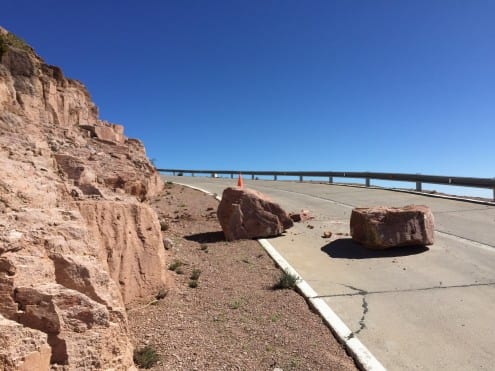First person: 8.3 magnitude earthquake hits Chile
By ucapola, on 23 September 2015
A combination of high mountains, clear skies and bone-dry deserts makes the north of Chile one of the world’s best places to observe the sky. Numerous international observatories are located there, and astronomers from around the world frequently travel there to carry out their research. Ofer Lahav, Perren Professor of Astronomy at UCL, was there during the magnitude 8.3 earthquake of 16 September. This is his personal account of the events.
The Earthquake started on Wed 16 Sep at 19:54 (local time), just as we were preparing for the start of DES (Dark Energy Survey) observations.
We left the telescope immediately, and moved to the shaky ground outside the dome. Eventually we were evacuated from there to the CTIO dining hall.
After-shocks continued throughout the night, but the oscillations finally decayed.
The following morning was sunny and quiet. Observations resumed the following night.

Boulders dislodged from the mountainside and fell onto the road near the observatory. Photo: Ofer Lahav
I left next morning as planned, flights were on schedule.
We were all impressed by the way the observatory staff handled the situation efficiently and calmly.
It is re-assuring that the system, in part assembled at UCL, is working so well – the only obstacles between the DECam instrument and the galaxies are the Earth’s atmosphere and quakes…
 Close
Close




